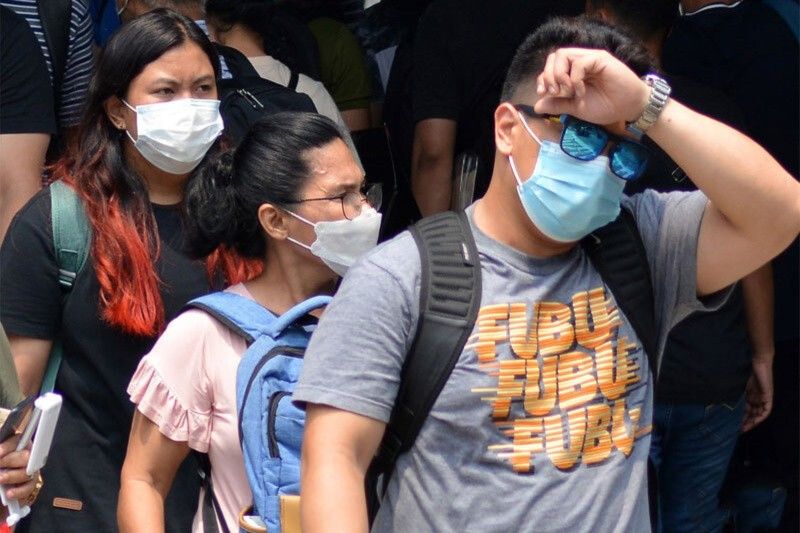Philippine economy posts better-than-expected Q1 growth, but slower

MANILA, Philippines (Updated, 12:53 p.m.) — The Philippine economy opened the year with a slower growth, albeit better than consensus amid favorable base effects and a resilient consumer spending.
The Philippines’ gross domestic product grew 6.4% year-on-year in the first three months of the year, the Philippine Statistics Authority reported Thursday. This was slower compared to the annual growth rate of 7.1% recorded in the fourth quarter of 2022, and the 8.0% expansion recorded a year ago.
But quarter-on-quarter, the economy grew 1.1%. The latest year-on-year outturn was also better than the median estimate of 6.1% growth based on a BusinessWorld poll of 23 economists.
Economic managers are eyeing the Philippine economy to grow at a clip of 6-7% this year. Consumer spending kept the domestic economy afloat for most of 2022, expanding 7.6% on an annual basis despite a brutally-high inflation.
However, data showed household consumption grew at a slower pace of 6.6% on-year in the first quarter, compared to the 7% expansion in the preceding three months.
The latest GDP reading benefitted in part from base effects, as the domestic economy was still finding solid ground as mobility restrictions remained in place. This was the assessment of Nicholas Antonio Mapa, senior economist at ING Bank in Manila.
“Growth will likely moderate... supported by still robust consumption with the YoY reading benefiting from a favorable base,” he said in a Viber message ahead of the data release.
For Mapa, consumer spending took the cudgels of maintaining the economy’s growth momentum.
“Rate hikes may cap bank lending and investment outlays as a whole while government spending should be slowed by concerns about the debt levels,” Mapa added.
Domini Velasquez, chief economist at China Banking Corp., agreed with Mapa’s assessment that growth slowed down. She expects this trend to persist in the coming months.
“Moving forward, we expect GDP in the coming quarters to print lower without the momentum from the pandemic reopening,” she said in a Viber message
As it is, Velasquez noted that the domestic economy will hit an inflection point, as the Bangko Sentral ng Pilipinas’ aggressive interest rate hikes take hold.
“For full year 2023, we maintain our view that GDP growth will likely fall below or nearer the lower end of the government’s 6.0-7.0% target,” Velasquez added.
Rate hikes hurt consumption
Meanwhile, capital formation sagged in the first quarter, retreating 12.2% year-on-year in the first quarter compared to the 17.7% outturn a year ago.
Government spending, despite concerns surrounding fiscal space and debt, rose to 6.2% in the first quarter.
Exports and imports of goods and services suffered in the first quarter, as external headwinds dampened its prospects to 0.4% and 4.2% each.
Across major industries, the services sector did most of the heavy-lifting, inching down 8.38% year-on-year in the first quarter. Agriculture surprised with 2.2% growth in the same period while industry, comprising manufacturing, declined 3.9% in the first quarter.
National Economic and Development Authority chief Arsenio Balisacan indicated that that monetary tightening could have already dented spending across the domestic economy.
“Higher interest rates last year could have impacted consumption. There are estimates saying that effects could be felt within six months to a year, those effects tend to taper,” Balisacan told journalists.
That said, the explosion in consumer spending felt towards the end of 2022 is already waning but Balisacan noted that some sectors are still not churning at 2019 levels, such as tourism and mining, which he thinks could support the economy’s momentum.
Analysts like Gareth Leather, senior Asia economist at Capital Economics, forecasts the economy will struggle in the coming months.
“We think the economy is unlikely to get much help from public sector over the coming quarters. The country’s debt-to-GDP ratio increased from 40% of GDP in 2019 to 61% in 2022 because of the pandemic, and a period of fiscal consolidation will be required to stop debt from rising further,” he said in an emailed commentary.
The NEDA chief noted that for the Philippine economy to hit the lower end of its 6-7% growth aspirations this year, GDP would need to expand at least 5.9% in the next three quarters.
To hit upper range, or 7% and beyond, the economy would need to churn 7.2% in the next three quarters.
The economy could still be pulled back by the impact of monetary tightening, as some experts expect the economy to cushion the blows of aggressive rate hikes.
Leonardo Lanzona, an economist at Ateneo De Manila University, spotlighted the risks facing the domestic economy.
“As the government continues to grapple with inflation, huge debts and the effects of the El Niño, we should expect further declines in the economic growth,” Lanzona said.
- Latest
- Trending



























